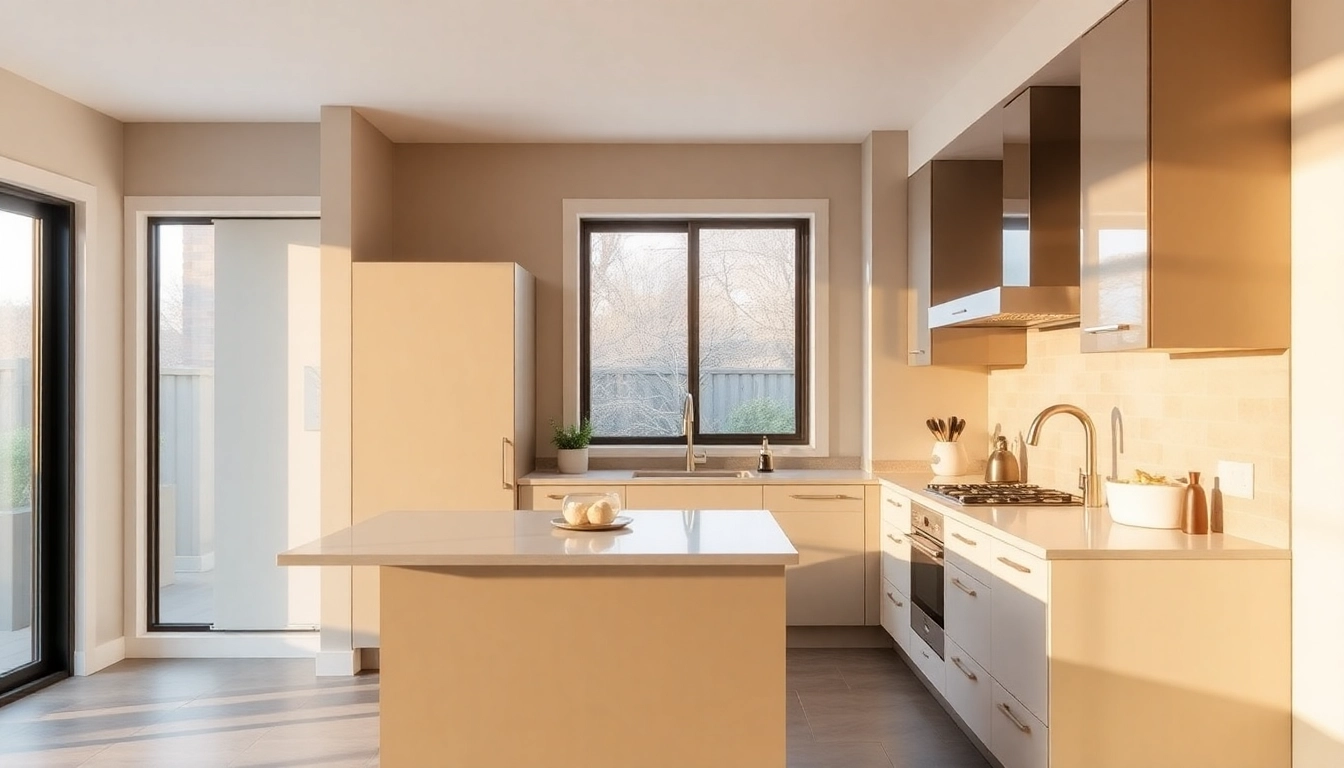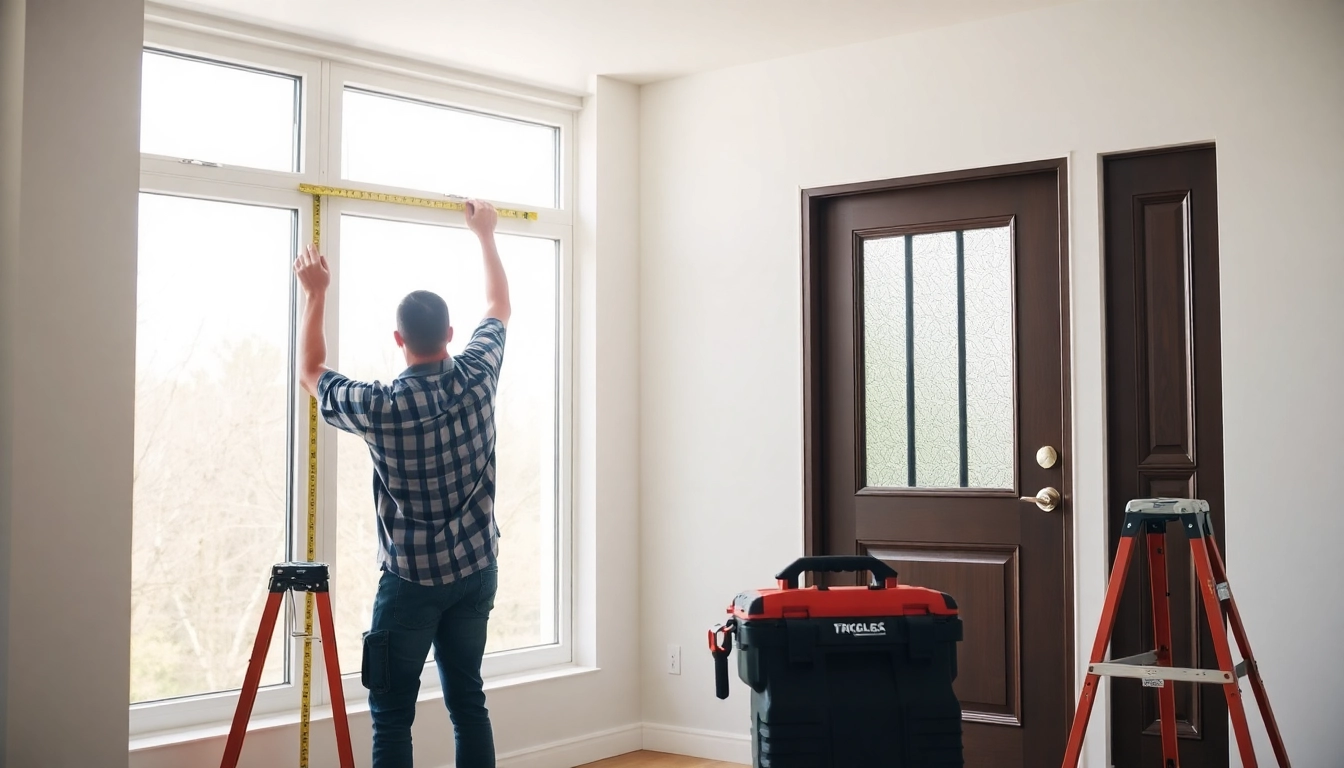Understanding Remodeling: What It Means for Your Home
Remodeling is a transformative process that allows homeowners to redefine their living spaces, improve functionality, and elevate aesthetic appeal. Whether you’re aiming to modernize your kitchen, expand your living area, or completely overhaul your outdated bathroom, understanding the nuances of remodeling is essential for a successful project. At its core, remodeling involves making significant changes to the structure, design, or layout of a property, unlike simple cosmetic updates. If you’re considering such a substantial renovation, exploring the full scope of what remodeling entails will help you make informed decisions and avoid costly pitfalls. For comprehensive guidance, visit Remodeling that aligns with your goals.
Definition and Importance of Remodeling
Remodeling is defined as the act of changing or altering the structure, style, or form of a building. It extends beyond cosmetic updates to include structural modifications, layout redesigns, and integration of new technologies. The importance of remodeling cannot be overstated; it directly affects the functionality, safety, and value of your home. A well-executed remodel can turn a tired, inefficient space into a modern haven that reflects your lifestyle and preferences. It also offers significant financial advantages — increasing property value and improving energy efficiency, which can lower utility bills. According to industry reports, homeowners who invest in strategic remodeling see an average return on investment (ROI) of approximately 70-80%, making it a financially sound decision in the long term.
Key Differences Between Renovating and Remodeling
People often confuse renovating with remodeling, but they are distinct processes with different scopes and implications:
- Renovating: Involves cosmetic upgrades aimed at improving appearance without altering the fundamental structure. Examples include repainting walls, replacing fixtures, installing new flooring, or updating cabinetry. Renovations are typically quicker and more budget-friendly, focusing on aesthetics and minor functional improvements.
- Remodeling: Encompasses comprehensive changes that transform both the interior and exterior of the space. This can include removing walls, changing room layouts, expanding spaces, or updating essential systems like plumbing and electrical wiring. Remodeling is often driven by the need for increased functionality, adapting to new lifestyle requirements, or substantial value enhancement.
Understanding this distinction helps prioritize your project goals and budget planning. While renovations enhance beauty and comfort, remodeling can redefine how you live and utilize your space, often requiring more time, expertise, and investment.
Common Remodeling Projects and Their Benefits
Kitchen Remodels
The kitchen is often the heart of the home, and remodeling it can significantly boost both aesthetic appeal and functionality. Modern upgrades might include open-concept layouts, smart appliances, and ergonomic cabinetry. Benefits range from improved energy efficiency to increased property value. A recent survey indicates that a kitchen remodel can add up to 10-15% to a home’s market value.
Bathroom Renovations
Upgrading a bathroom involves replacing fixtures, installing new tiles, and improving ventilation systems. Modern bathrooms emphasize spa-like comfort with features such as walk-in showers, soaking tubs, and smart lighting. Benefits include greater daily comfort, enhanced safety, and a boost in perceived home luxury.
Room Additions and Expansions
Expanding a living space involves constructing new rooms or enlarging existing ones to better suit your needs. Popular options include adding bedrooms, home offices, or family rooms. Such projects improve livability, accommodate growing families, and can substantially increase property value.
Basement Finishings
Turning an unfinished basement into a functional area — such as a media room, guest suite, or gym — can maximize usable space while adding value. Proper insulation, moisture control, and design considerations are essential for durability and comfort.
Benefits of Comprehensive Remodeling
Each of these projects offers tangible benefits—improved comfort, better energy efficiency, and increased home value. Strategic remodeling also enhances safety, especially when outdated electrical or plumbing systems are upgraded. Moreover, it provides an opportunity to incorporate modern technology, eco-friendly materials, and design trends that elevate your lifestyle.
Planning Your Remodeling Project: Step-by-Step Guide
Assessing Your Home’s Needs and Goals
Effective remodeling starts with a thorough assessment of your current space and clear goal-setting. Consider which areas require improvement or expansion, identify pain points, and envision your ideal home environment. Think about your lifestyle, future needs, and whether your current layout supports your daily activities. Document your priorities—such as increasing storage, adding a bathroom, or improving energy efficiency—to guide your project scope.
Budgeting and Timeline Considerations
Developing a realistic budget necessitates research and consultation with experts. Determine how much you’re willing to invest and allocate funds for contingencies—typically around 10-15% of your total budget. Cost factors include materials, labor, permits, and unexpected issues. Establishing a timeline helps manage expectations; most major remodels take 3-6 months, depending on complexity. Working with a professional contractor can help produce detailed schedules aligning with your financial and personal timelines.
Selecting the Right Remodeling Contractor
Choosing an experienced, licensed contractor is critical to project success. Seek references, review portfolios, and verify credentials. A reputable contractor will provide detailed quotes, transparent communication, and adherence to deadlines and budgets. Regular oversight and open dialogue ensure your vision is realized effectively. For Rochester-area projects, consulting recognized local specialists like Bryce & Doyle can be a strategic move, offering tailored expertise and proven craftsmanship.
Design Ideas and Trends in Home Remodeling
Popular Styles and Aesthetic Choices
Contemporary, rustic, Scandinavian, industrial—all these styles influence modern remodeling projects. Popular aesthetic elements include minimalist designs, open-concept layouts, and natural textures like wood and stone. Colors tend toward neutral palettes accented with bold, vibrant accessories. Additionally, homeowners increasingly favor multifunctional rooms that adapt to various activities, such as flexible home offices or convertible living areas.
Innovative Materials and Technologies
Advances in building materials and smart home integration are transforming remodeling practices. Eco-friendly materials like recycled wood, low-VOC paints, and energy-efficient windows promote sustainability. Smart technologies—including automated lighting, programmable thermostats, and integrated security systems—enhance convenience and energy savings. The adoption of digital design tools allows for precise visualization of projects, minimizing errors and aligning expectations.
Creating Functional and Stylish Spaces
Functionality must harmonize with style. Use smart storage solutions, ergonomic layouts, and durable surfaces to create spaces that are both beautiful and practical. For example, installing a pull-out pantry or a retractable island optimizes small kitchens, while customized closet systems maximize space. Personalization through decorative elements, lighting, and color schemes helps make remodeled spaces uniquely yours.
Executing Your Remodeling Project Successfully
Preparing Your Home for Renovation
Preparation is crucial to minimize disruptions and protect your belongings. Clear your space of furniture and valuables, cover remaining items, and plan for dust and noise management. Temporary living arrangements might be necessary for extensive projects. Obtaining the necessary permits before work begins ensures compliance with local regulations, avoiding delays and fines.
Managing the Remodeling Process and Expectations
Open communication with your contractor is essential. Establish clear timelines, deliverables, and quality standards upfront. Regular site visits and progress meetings help identify issues early, ensuring they’re addressed promptly. Flexibility is often needed to accommodate unforeseen circumstances like supply chain delays or structural surprises.
Ensuring Quality and Safety During Construction
Safety protocols must be rigorously followed to protect both workers and residents. Confirm that your contractor complies with OSHA standards and local codes. Inspections at various stages verify that materials meet specifications and that installations are done correctly. Investing in high-quality materials and skilled labor directly impacts durability and safety.
Measuring Success and Maintaining Your Remodel
Post-Remodeling Inspection and Satisfaction
After project completion, conduct a thorough walkthrough with your contractor. Address any deficiencies or unfinished work immediately. Soliciting feedback and reviewing the project scope ensures your initial goals were met. Taking before-and-after photos aids in assessing improvements and can be valuable for future adjustments or resale negotiations.
Tips for Care and Long-Term Maintenance
Routine maintenance preserves your investment. Regular cleaning, inspecting for damage, and servicing systems like HVAC and plumbing extend lifespan. Use recommended cleaning products for surfaces and promptly repair any issues to prevent escalation. Keeping detailed maintenance records and warranties will help with future repairs and upgrades.
Maximizing Return on Investment
Strategic remodeling choices can significantly enhance your property’s value. Focus on high-impact areas like kitchens and baths, and incorporate sustainable features that appeal to eco-conscious buyers. Proper documentation of upgrades, quality craftsmanship, and adherence to local design trends ensure your remodel not only adds comfort but also command premium resale value.

